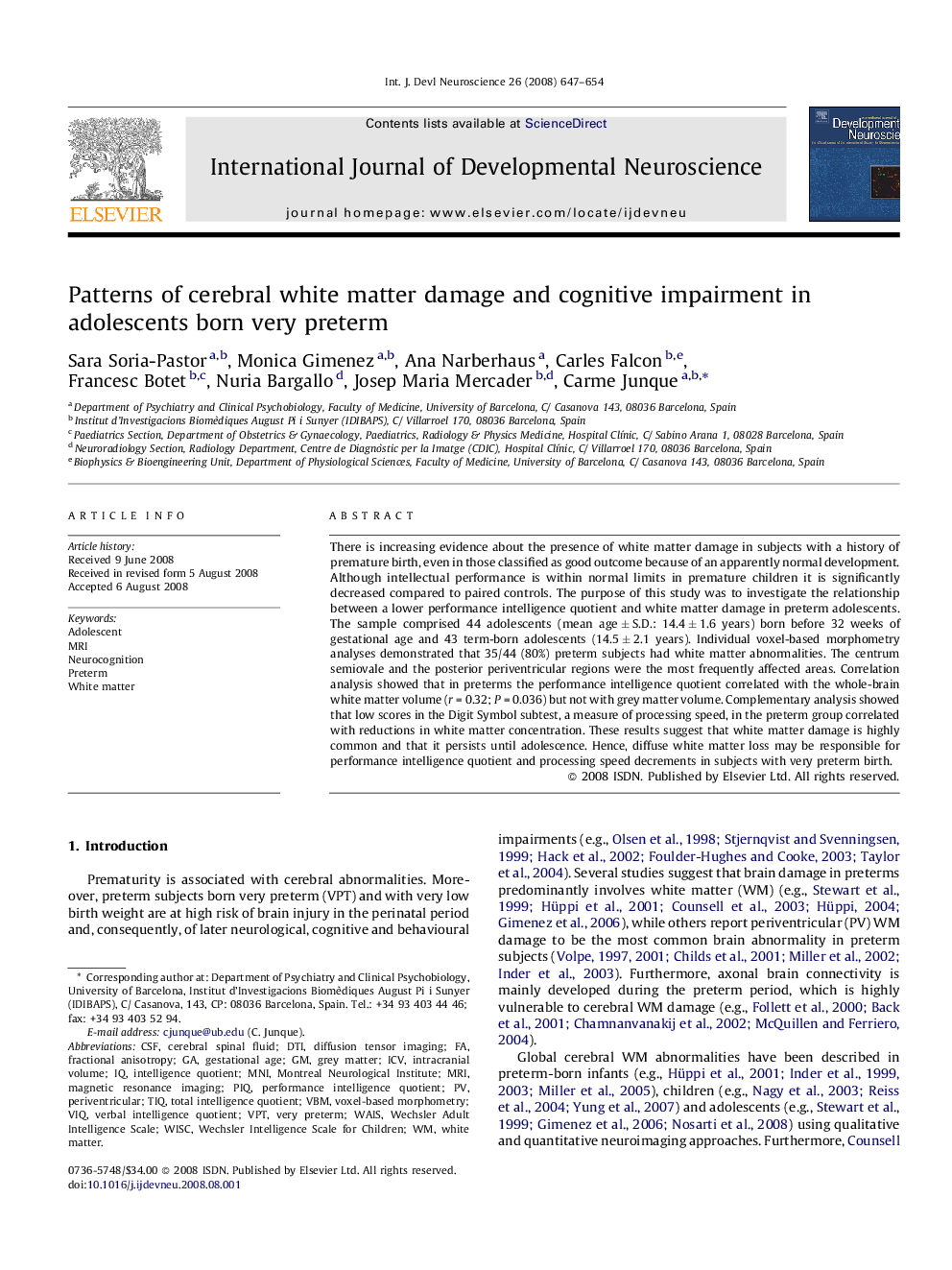| Article ID | Journal | Published Year | Pages | File Type |
|---|---|---|---|---|
| 2786979 | International Journal of Developmental Neuroscience | 2008 | 8 Pages |
There is increasing evidence about the presence of white matter damage in subjects with a history of premature birth, even in those classified as good outcome because of an apparently normal development. Although intellectual performance is within normal limits in premature children it is significantly decreased compared to paired controls. The purpose of this study was to investigate the relationship between a lower performance intelligence quotient and white matter damage in preterm adolescents. The sample comprised 44 adolescents (mean age ± S.D.: 14.4 ± 1.6 years) born before 32 weeks of gestational age and 43 term-born adolescents (14.5 ± 2.1 years). Individual voxel-based morphometry analyses demonstrated that 35/44 (80%) preterm subjects had white matter abnormalities. The centrum semiovale and the posterior periventricular regions were the most frequently affected areas. Correlation analysis showed that in preterms the performance intelligence quotient correlated with the whole-brain white matter volume (r = 0.32; P = 0.036) but not with grey matter volume. Complementary analysis showed that low scores in the Digit Symbol subtest, a measure of processing speed, in the preterm group correlated with reductions in white matter concentration. These results suggest that white matter damage is highly common and that it persists until adolescence. Hence, diffuse white matter loss may be responsible for performance intelligence quotient and processing speed decrements in subjects with very preterm birth.
